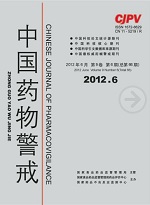|
|
The Analgesic Effect Study on Margin of Safety on Different Components from Cortex Periplocae
ZHU Lan-lan, BAO Zhi-ye, WANG Hui, HUANG Wei, SUN Rong
2012, 9(6):
333-334.
Objective To research analgesic effect of the margin of safety of Cortex Periplocae. MethodsAnalgesic effect from different components from Cortex Periplocae were investigated by hot plate test; the symptoms in mice were observed, the experimental datas of ED50, ED95, LD50 and LD5 are calculated by the Bliss method and the therapeutic index(TI), safety factor(SF) of different components from Cortex Periplocae were assured by applying some formulas. ResultsThe different components from Cortex Periplocae showed good effect of analgesia, and showed certain dose-effect relationship, ED50 of the water extracts from Cortex Periplocae is 1.5698 g·kg-1·d-1, TI is 59.611 and SF is 17.4702, ED95 is equal to 48.0 times and LD5 is equal to 839.0 times of 70kg people's daily dried medicinal herb expenses. The alcohol extracts from Cortex Periplocae of ED50 is 1.3687 g·kg-1·d-1, TI is 44.853 and SF is 14.2405, ED95 is equal to 35.7 times and LD5 is equal to 509.0 times of 70kg people's daily dried medicinal herb expenses. ConclusionThe analgesic effect of the margin of safety from water extracts is greater than the alcohol extracts from Cortex Periplocae. We should pay more attention to the occurrence of adverse reactions in the application.
References |
Related Articles |
Metrics
|
